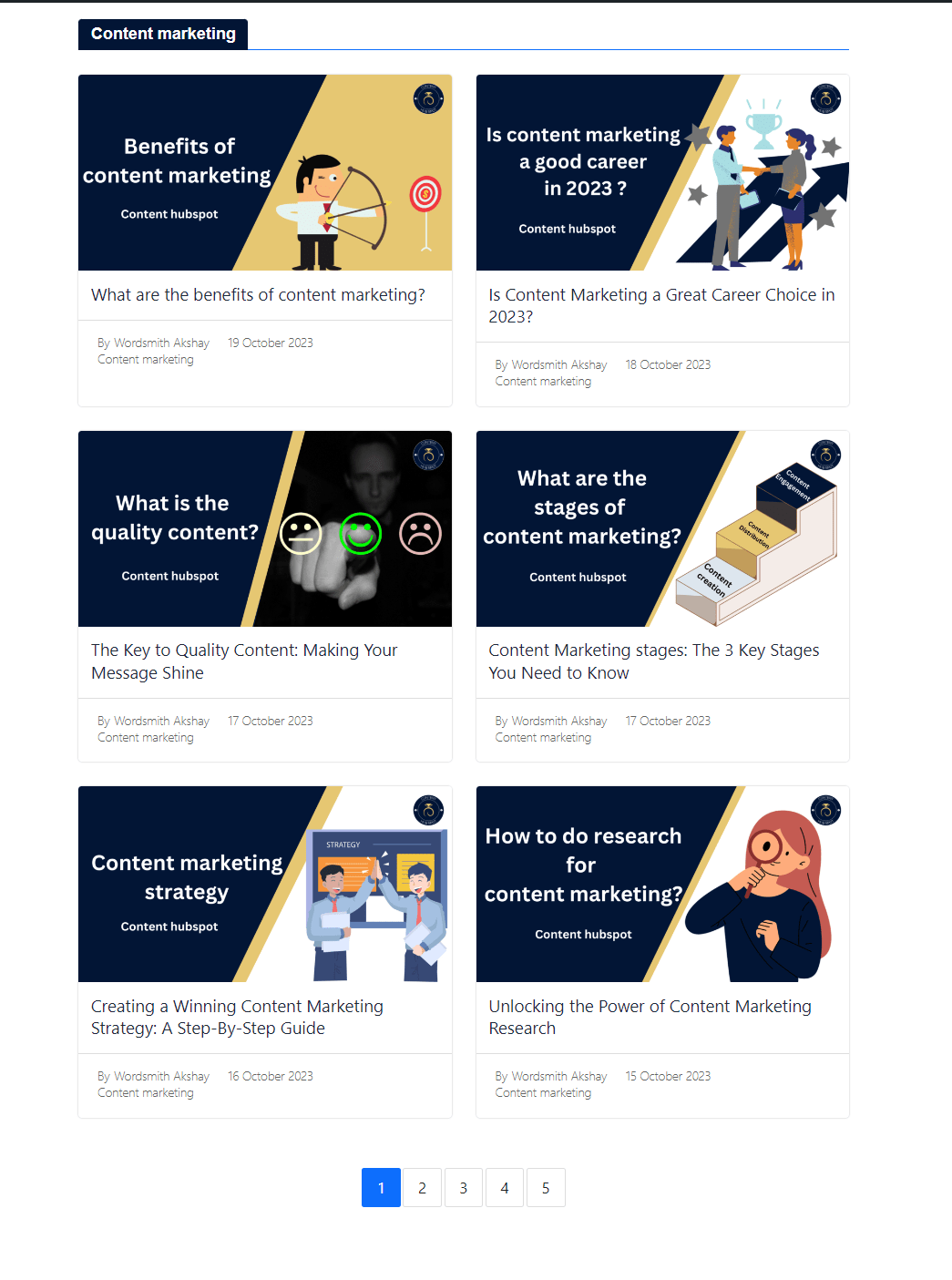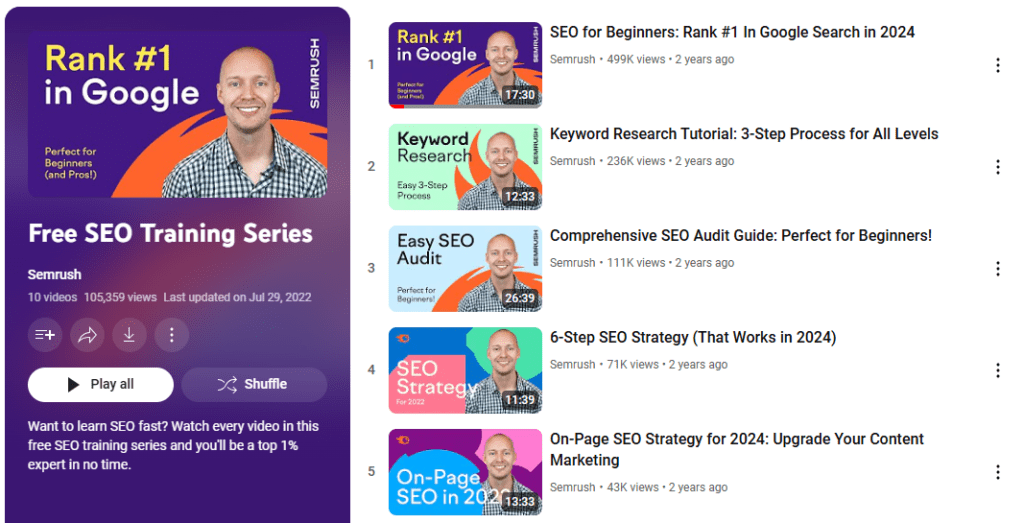
Content marketing is a powerful strategy for businesses looking to connect with their target audience, boost their online presence, and drive conversions. But it’s not just about churning out random blog posts or social media updates. To make your content marketing efforts more strategic and effective, you need to understand the concept of a “content bucket.” In this post, we’re going to break it down for you.
Table of Contents
What Is a Content Bucket?
To understand the content bucket, let’s first understand the words. Content buckets are made from two words: content and bucket. In content marketing, the meaning of content is something that people can consume, like information in different formats like blogs, videos, and images. Bucket’s meaning is container.
When you combine both words, it gives the meaning of a group of content that is organized on the basis of relevancy, category, etc. Now take a look at content bucket meaning.
Content Bucket Definition
A content bucket is a group of content organized on the basis of relevancy to help users engage with content in a more effective way. Generally, it is created by content creators to showcase their own content in a more effective way so that audiences can easily consume their content in a single place.
You might be wondering what a content bucket should look like. Take a look at this image to get a clear idea.

Content buckets example
Now let’s visualize it by taking content buckets as an example.
Let’s talk about bloggers. How they arrange their content means how they create content buckets. Blogger arranges their blogs by dividing them into categories that will help users access the same category of contents in a single place.
In this image, we assign a content marketing category so that target audiences can directly consume all content marketing blogs in one place.

Content Bucket: “Healthy Recipes”

Content Bucket: “SEO Training by SEMrush”

Why Are Content Buckets Important?
Consistency: Content buckets provide a framework for your content strategy. By focusing on a few key themes, you ensure that your content is aligned with your brand message and goals. This consistency helps build trust with your audience over time.
Targeted Audience Engagement: When you consistently produce content on specific topics, you attract an audience interested in those subjects. This means more engaged readers who are more likely to become customers or advocates.
Establishing Authority: Becoming an expert in a particular niche is a great way to stand out in a crowded digital space. Content buckets allow you to dive deep into a subject, showcasing your expertise and building authority.
Efficiency: Content buckets simplify content creation. When you know what topics, you’ll be covering, it’s easier to plan and create content. You can also repurpose and repackage content within the same bucket, saving time and effort.
How to Make Content buckets for social media
From this method, you can create any type of content bucket, like Content buckets for Instagram, Content buckets for LinkedIn, etc.
Follow these steps to create a content bucket:
Understand your target audiences: You need to brainstorm about your target audiences, what they like, pain points, queries, and how you can help them relate to your category. Arrange all the content on the basis of these questions so that you can create amazing content buckets.
Balance Variety and Relevance: While creating a content bucket, ensure your content buckets cover a variety of topics to keep the target audience engaged but remain relevant to your brand or industry.
Consistency: You need to maintain a consistent schedule for each content bucket to establish predictability and build audience habits.
Analyze and adapt: Regularly review the performance of each bucket and adapt your strategy based on what content resonates most with your audience.
Bounce tip for you only (our special audiences)
SEO Optimization: To rank on Google, you need to do SEO and use relevant keywords in your content buckets to improve search engine visibility and drive organic traffic.
Remember, the goal of content buckets is not just to organize content in an effective way but also to ensure it effectively reaches and helps your audience.
Content buckets vs content pillars
Content pillar and content bucket both are different things in content marketing. Content pillar is used to establish authority and expertise in specific areas.But content bucket is a strategy to organise content of the same type, category, etc. so that users can easily consume contents.
Example of content pillar
Check out this image showcasing Backlinko SEO expertise. They established authority in their niche by creating a comprehensive content pillar on SEO, featuring an in-depth blog that covers the topic extensively.
Example of content buckets
Take a look at this image of Backlinko. They have created a dedicated section for local SEO, organizing a variety of related content to ensure users can easily consume and navigate through their resources.
Conclusion
Content buckets are a valuable tool for content marketer looking to make their efforts more strategic and efficient. By categorizing your content around specific themes, you’ll engage your audience, build your authority, and establish your brand as a trusted resource.
Remember, the key is to stay true to your brand, focus on what your audience wants, and be consistent in your content creation. With well-defined content buckets, you’ll be on your way to content marketing success. So, go ahead, start brainstorming your content buckets, and get ready to take your content marketing to the next level!
Now I’d like to hear from you
Which topic discussed in today’s post are you unfamiliar with, and which topic would like further elaboration on?
Let me know by leaving a comment below and if you get values from this post then make sure to share it with your thoughts right now.



Amazing, this blog clear my all concepts related to content bucket. Thank you content HubSpot.
Amazing, this blog clear my all concepts related to content bucket. Thank you content HubSpot.
This is called quality content, this really help me to clear the concept of Content bucket. Thank you so much
Thank you for your valuable feedback.
Really helpful blog for content bucket
Thank you for your valuable feedback.